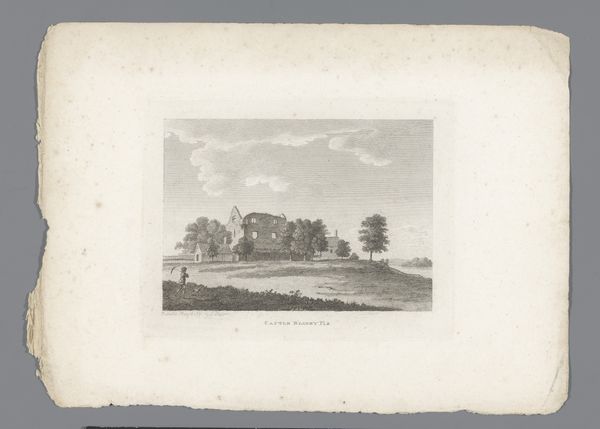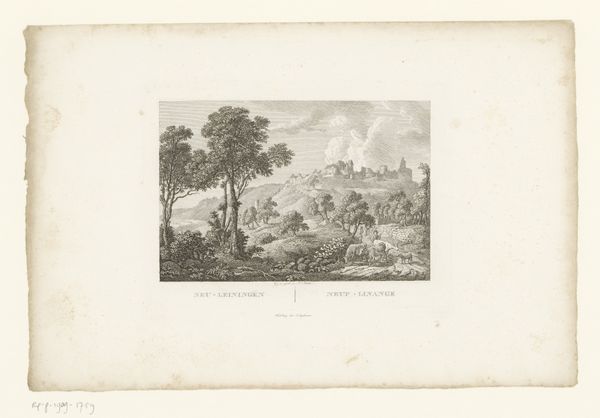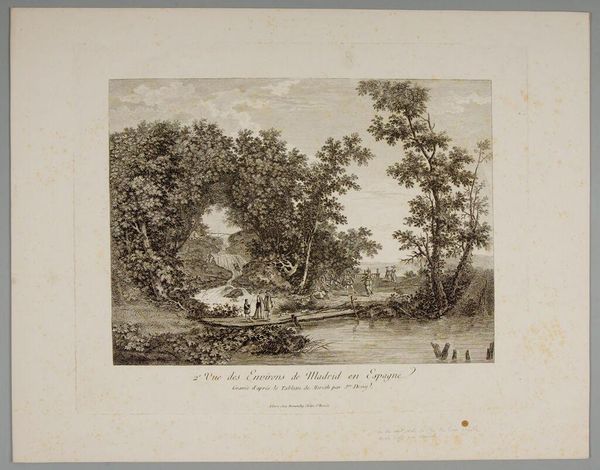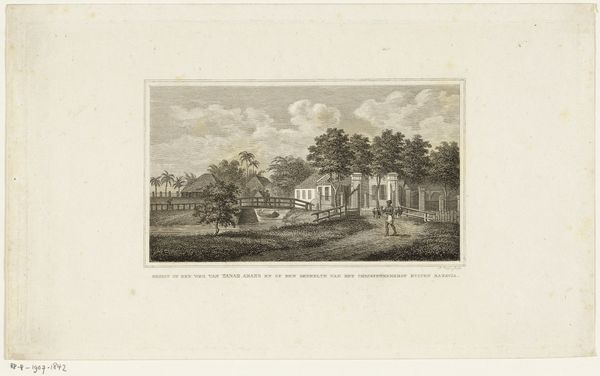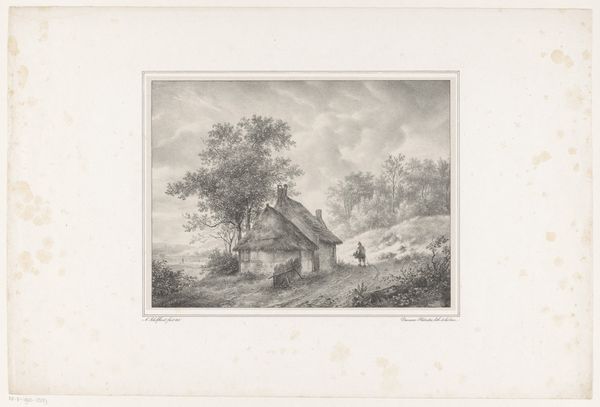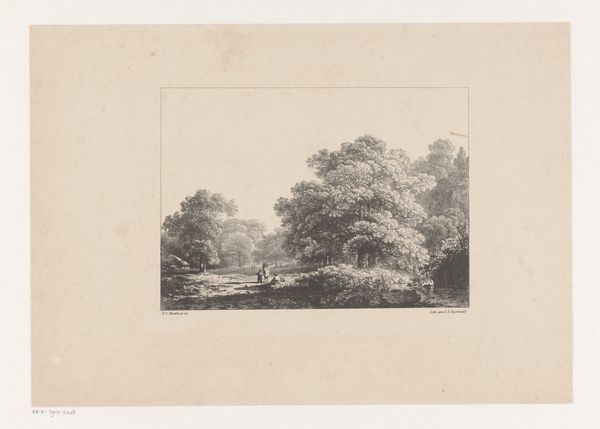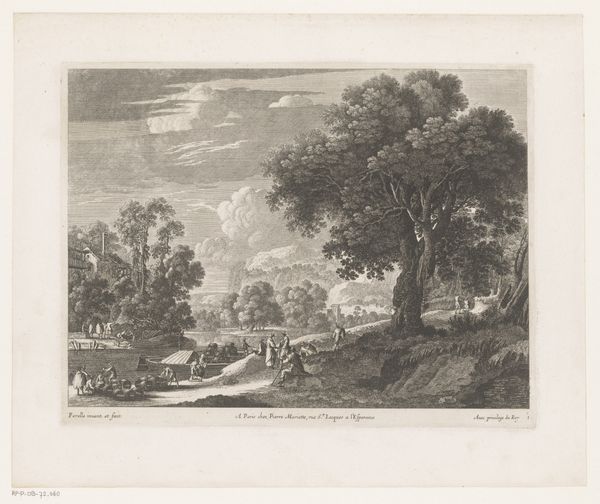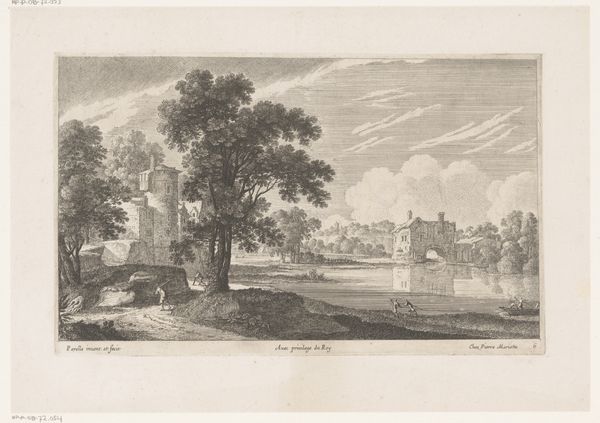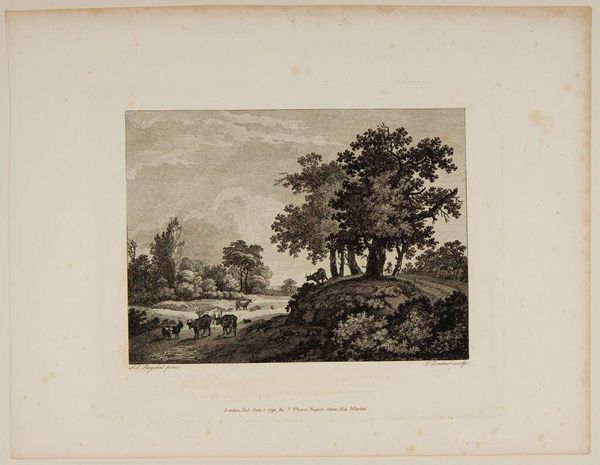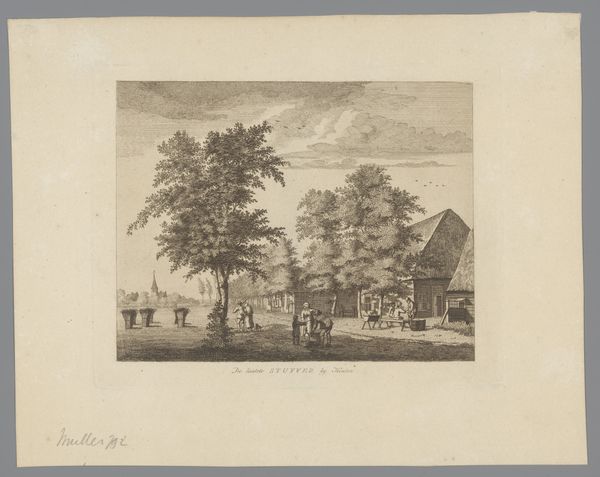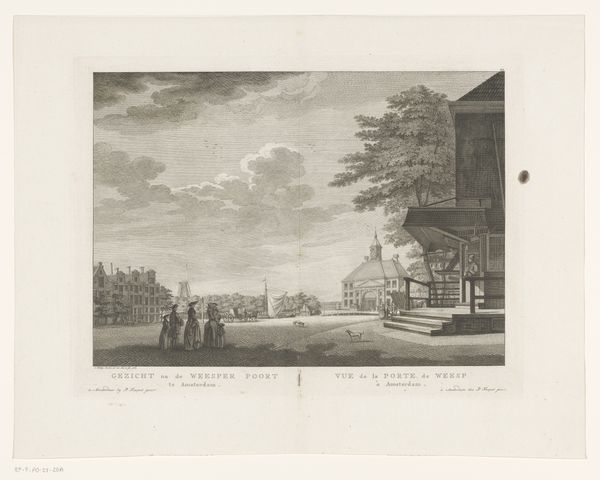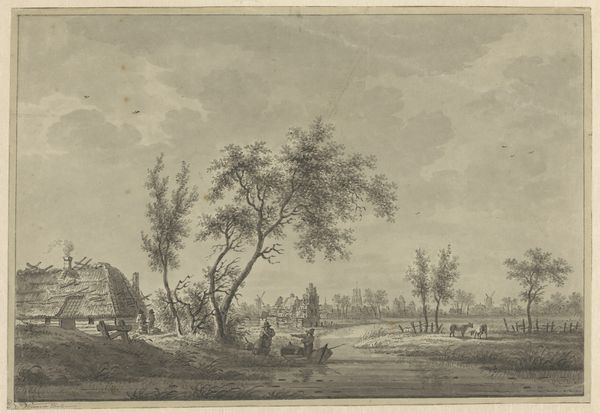
print, engraving
# print
#
landscape
#
romanticism
#
line
#
engraving
#
realism
Dimensions: height 176 mm, width 226 mm
Copyright: Rijks Museum: Open Domain
Jakob Wilhelm Christian Roux made this print, “View of a Luther Lime Tree near Worms,” using etching, a printmaking technique, around the turn of the 19th century. The artist would have covered a metal plate with a waxy, acid-resistant coating, then scratched an image into it. This exposes the metal, which is then bathed in acid. The acid bites into the metal where the wax has been removed, creating the recessed lines that ultimately hold ink. Looking closely, you can see how Roux skillfully used lines of varying thickness and density to create a sense of depth and atmosphere. The etched lines capture the texture of the bark, the density of the foliage, and the play of light across the landscape. This print offered a relatively inexpensive means of circulating images. It democratized art appreciation, making landscapes and landmarks accessible to a wider audience beyond the wealthy elite who commissioned paintings. The very act of etching, a process that allowed for reproducibility, reflects broader shifts towards industrialization and mass production.
Comments
No comments
Be the first to comment and join the conversation on the ultimate creative platform.
